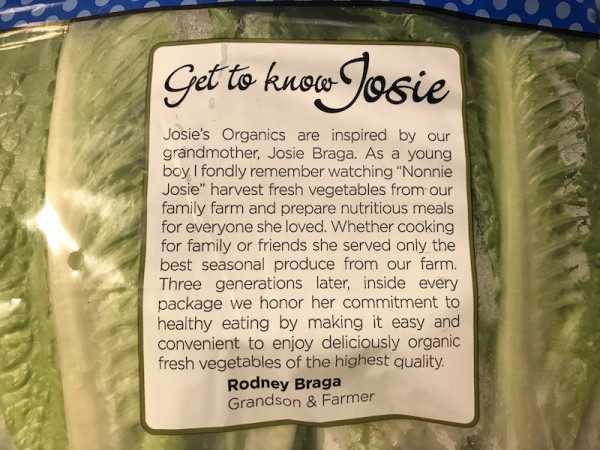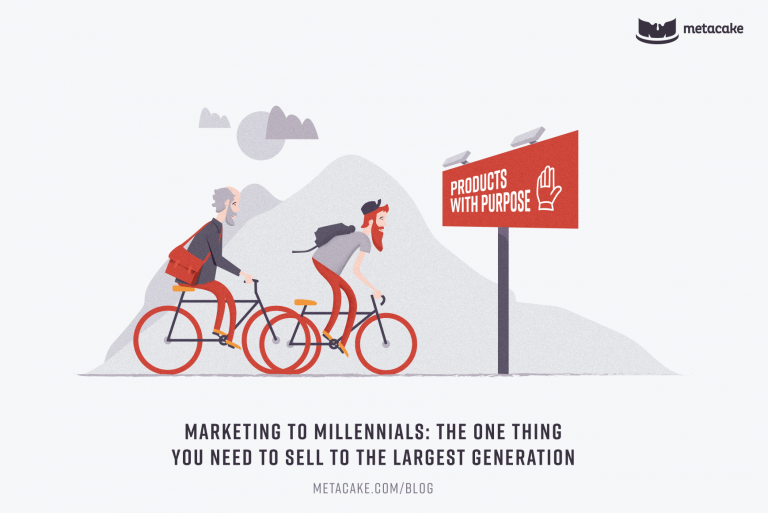Did you know that millennials over took baby boomers as the largest generation last year?
Well, they did.
What does that mean for your marketing strategy?
Over time, you need to adjust your marketing and your messaging to new generations in order to stay relevant.
With every audience, the goal is to personalize your messaging. Millennials will not respond to the same messages that baby boomers responded too, even when they reach the same age. Different generations and groups will resonate with different aspects of your brand more than others.
So you need to customize for each generation (and each target audience within said generation). The more personal and specific you can get in your messaging, the more effective your marketing will be.
What is different about selling to millennials?
Millennials crave authenticity. This is what they know. It is how they were raised. Older generations grew up in a time when brands didn’t have to be transparent. They had to believe what they were told by brands, because they had no way to authenticate (at least without significant effort).
Millennials, on the other hand, don’t have to believe what you say about your brand. They have access to reviews, opinions, and research of all sorts in the online world. So as a brand, that means that your best bet is to be authentic and transparent in order to capture this audience.
You simply can’t hide, so you better put it out there yourself.
And fun fact! This helps you connect not only with millennials, but all of your customers, no matter their generation or segment. I mean, who doesn’t like transparency?
Brands that succeed in being transparent and authentic with their audience, and capturing millennials, do the following:
1) Emphasize their story and their why.
Millennials care about story. As a generation, they care about what it takes to make something and why a brand decided to create it in the first place. They care if it benefits someone (and equally if someone was hurt in the process of its making). Millennials want to know that at the end of the day brands are not just out there to make a buck, but because they really care about something and believe in their product.
2) Create an emotional connection with their brand.
Sharing your story and the reason behind your brand helps to create this emotional connection with your brand. And so does consistent interaction and responsiveness. Make sure that you are consistently providing opportunities for your millennial audience to interact with you in order to create this emotional connection with your brand beyond the product itself.
3) Have a strong presence in all of the relevant social channels.
This may not be every social channel. It will depend on your brand and where it authentically makes sense for you to be. The goal is to be where your audience is.
4) Focus on craftsmanship and quality.
Products that are low quality and/or mass produced are a turn off for millennials. Craftsmanship is something that millennials care about. This reaction is in response to brands that tried to lower their quality and squeeze every dollar out of their customers to increase their margin. Millennials won’t stand for this. They expect something more.
Here are a few brands that we think do this well:
How can your brand become authentic and transparent?
In general, being authentic as a brand means the following:
Have integrity. Be truthful. Make sure that what you say about your brand aligns with what other people say about your brand.
If you have this authentic core, then here are some ways to make this come across in your brand to become more marketable.
1) Dig into your mission and why you exist.
 All brands exist for a reason (even brands that can’t yet articulate it).
All brands exist for a reason (even brands that can’t yet articulate it).
I mean, even lettuce at costco does this. It does a lot of good to think through this and be able to articulate your story when it comes to the millennial audience.
2) Create great products.
This is the only way to create a brand that lasts.
3) Care about building a great company.
If you don’t care, why would they? Millennials connect with brands that care, brands that stand for something.
4) Invest deeply in quality brand content.
Once you have your story, it’s not enough to just put it out there. You need to articulate it in a way that resonates with people.
5) Incentivize and use user generated content.
Having a window into real customers is pretty much as authentic as you can get. Rather than just telling your own story, tell customer stories about how your product helped them.
6) Stop hard selling.
Don’t start with a hard sell. Instead, focus first on making an emotional connection. Show millennials that your brand matters so that they dig deeper into your brand and your product line. Then try to close the sale.
7) Segment your audience.
It’s not enough to change your marketing and messaging to target millennials. Millennial are a huge group (now the largest generation as we pointed out above), so make sure to segment this generation into usable target audiences.
8) Create person to person messaging.
Make sure that your messaging sounds like you are having a real conversation. Don’t talk at people. Talk with people and listen to what they have so say in return.
9) Don’t try to be everything to everyone.
Not everyone in the world is going to be a fit as a customer for you. Not everyone in the world should own your product. Be specific and seek out the audience that fits your product well.
